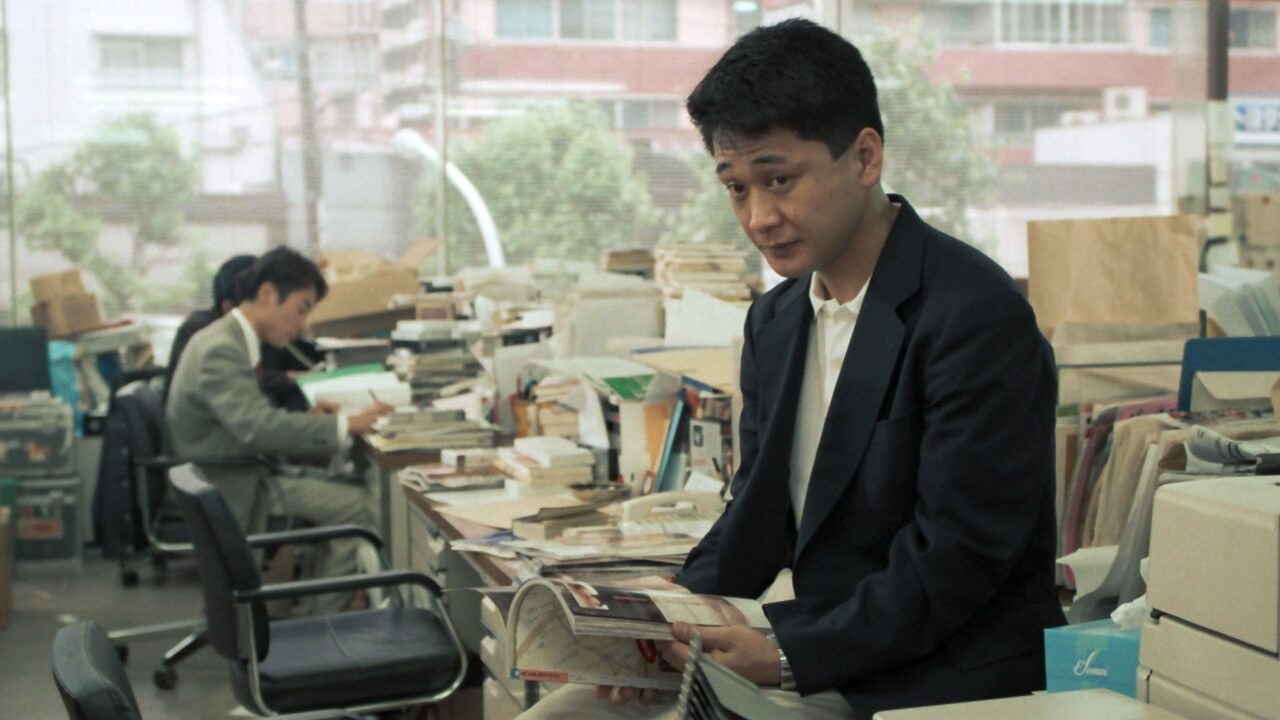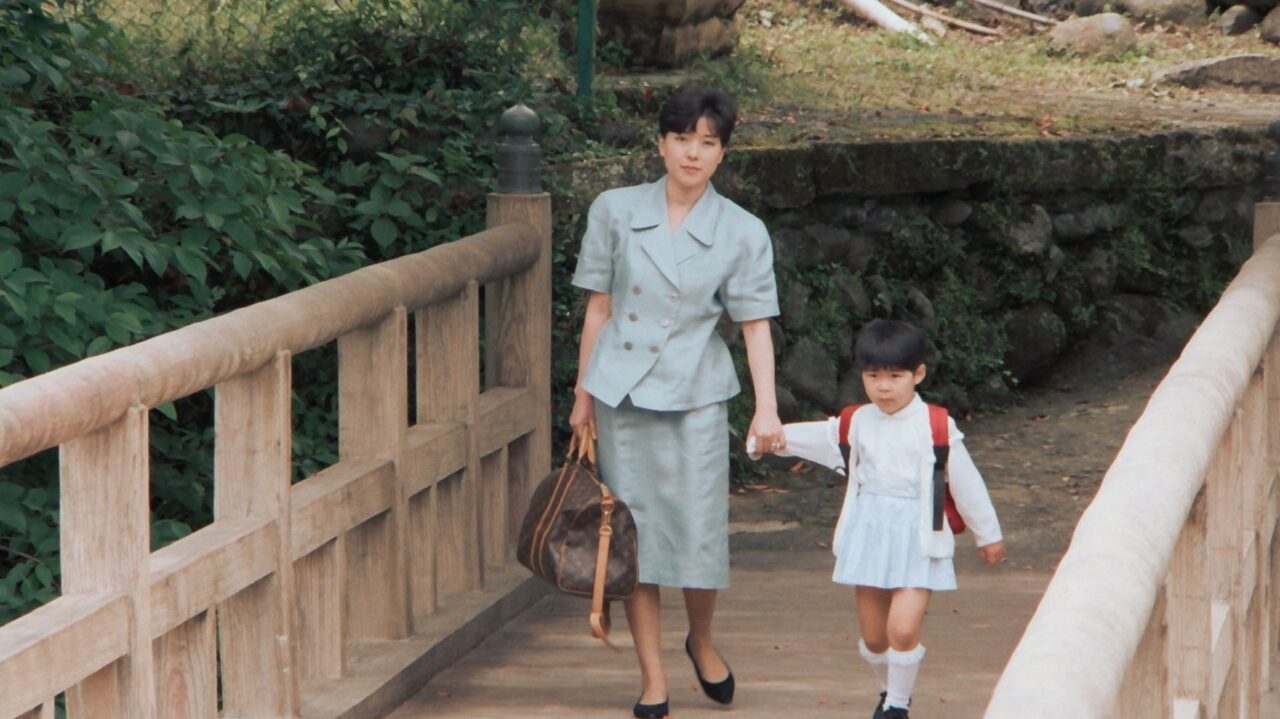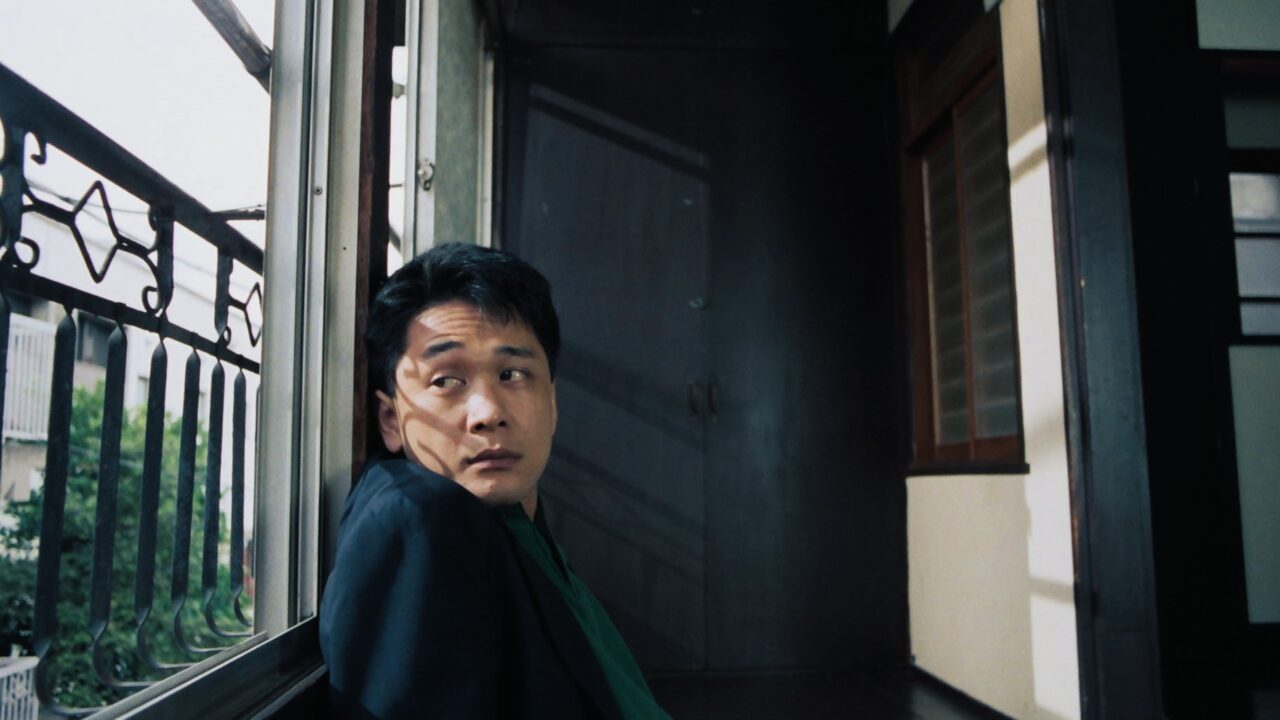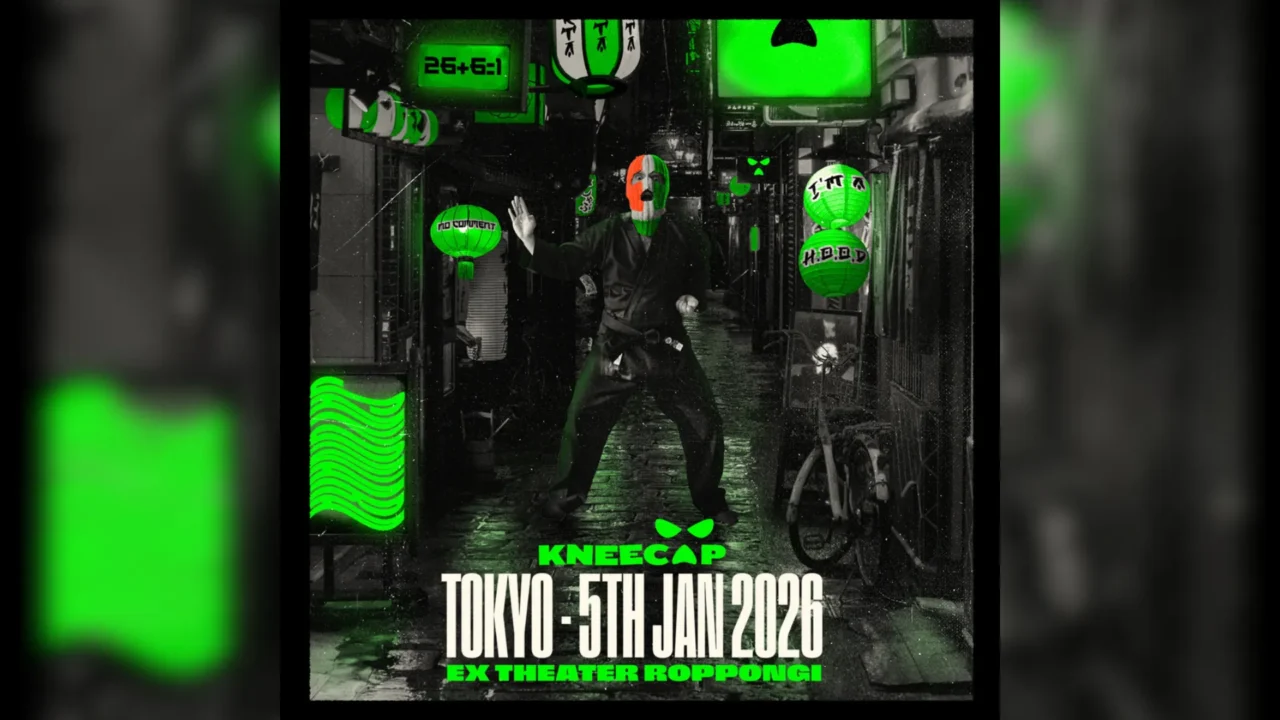The 1991’s movie “SKINLESS NIGHT,” cinephiles’ favorite rare masterpiece, will be released in theaters for the first time in 32 years.
The film symbolically uses the song “Hei no Ue de” by Hachimitsu Pie, the band that preceded the Moonriders and was only active for a short period in the early 1970s. Yuji Shibasaki, a music director and critic with an unusual obsession for the aforementioned song, explains the appeal of this film, focusing on the music and its era.
This is the 6th installment of “The Music Selection Creates the Movie ” series. This article contains descriptions of the film’s contents. Please be forewarned.
INDEX
A personal odyssey by an adult film auteur
Director Rokuro Mochizuki is excellent at portraying helpless men. Or he might even be a little too skillful. His skill is sometimes blatantly anti-chronological. Despite being Unaware of their own helplessness, dreamy, and willing to cause trouble around them, that’s what he describes.
On the other hand, the men depicted in Rokuro Mochizuki’s works are strangely honest and humorous. The innocence and humor that these irrepressible people hold in their hearts at the same time. The film, as a medium, has long excelled at capturing such multiple facets and openness of human beings with sharp and sometimes cruel beauty, rather than simply dismissing them. In this sense, Rokuro Mochizuki is unquestionably a “master of film.”

Born in Tokyo in 1957, Mochizuki became absorbed in film and theater as a young man and dropped out of Keio University. He then entered the Image Forum Research Institute. And after graduation, he studied under Masaru Kaneko, starting his career as a screenwriter. His talent was recognized by porno film master Nakamura Genji, and while working on screenplays for Nikkatsu roman-porno films (check out “Girl Rape Case: Red Shoes,” directed by Uegaki Yasuro, a rare masterpiece in the history of Nikkatsu roman-porno, which he co-wrote during this period), he also worked as an assistant director.
After marking his directorial debut in 1985, he continued to work in the porno movie industry, but in 1987 he started his own company and engaged mainly in the production of adult videos.
This film, “Skinless Night” (1991), was the first non-pornographic film Mochizuki worked on. It was screened at more than 10 film festivals, including the Berlin International Film Festival and the Tokyo International Film Festival, and was highly acclaimed. Now that the 35mm film has been unearthed, it has been given an elaborate digital restoration and is being screened in a revival for the first time in 32 years.
The main character, Mutsuro Kayama (Hitoshi Ishikawa), is a former porno film director who now runs an adult video production company while directing his own films. While he is busy with his production, his dream of making movies, which he once dreamed of, comes back to him in a flash.
Although unsatisfied with his life, he cannot shake off his frustration. Moreover, although he has a family, he is unable to break his longing for the woman he had a crush on in his youth and chases after her shadow subconsciously.
As you may have noticed from the synopsis above, this film is a semi-autobiographical work that projects Mochizuki’s own personal journey even though some episodes had been dramatized by Mochizuki. In this respect, the film is reminiscent of François Truffaut’s “Bed and Board” (1970) and “Love on the Run” (1979). Therefore, the story, which carefully describes the details of the industry, the characterizations of the film’s characters, and the weakness, frustration, and hesitation shown by Kayama are all accompanied by a somewhat tingling, existential realism. In addition, the unique colorful atmosphere of Tokyo from the late Showa to the early Heisei period, which is evoked in the locations and props, will bring a kind of strange nostalgia and comfort to even those of our generation who has not lived in those days.

INDEX
Exploring the inner struggles of a former subculture youth
The theme of this film is “vanished youth and its rebirth.” In other words, the narrative trope is very authentic (despite the “uncommon” setting of the adult video industry) and is based on universal themes that have been challenged by numerous films in the past. Therefore, we can easily enter the world of the film and project our own feelings onto it.
As readers with some knowledge of the history of porno film will be well aware, the Japanese porno film industry, which was once led mainly by Nikkatsu Roman Porno, was a world of experimental, “cinematic” films, with many masters who later made it big in non-pornographic films and creators with a strong auteuristic (one might venture to say “ideological”) streak stirring in their hearts. Many experimental and ambitious attempts that can only be described as “cinematic” have been made on film. The films often reflect the mood, in varying shades of gray, of the frustration of the “political season” and the proliferation of subcultures and countercultures, a mood that has been widely shared in Japanese underground culture since the 1970s.

It seems Kayama, the protagonist of this film, is a “former youth” who spent his youth breathing the air of that era and dreamed of a future as a film/theater buff.
There is a symbolic scene in the film. He meets a group of businessmen, who were once apparently his movie/theater friends and goes to see a play by Karagumi, the charismatic underground theater troupe of Juro Karo.
Although he is currently “indulging” in directing adult videos for a living, that is not what he really wants to do. He is not able to shake off such blue thoughts even if he tries, and it’s evident in his everyday work, such as when he talks poetically even in business meetings with clients (his colleagues are more realists ridicule his behavior.

The day after seeing a play by the Karagumi, Kayama rifles through his old luggage at home as if on a sudden impulse. What he discovers is an 8mm film containing a short film he shot in his youth, dedicated to a woman he admired.
INDEX
The symbolic insert song: Hachimitsu Pie’s “Hei no Ue de”
Director Mochizuki has shown extraordinary attention to the use of music in his films. For example, he used Yuka Dan for “A Yakuza in Love.” (1997), a thug film based on a true story, and for “Minazuki” (1999), for which Haruhiko Arai wrote the screenplay, he used the ending song, “Hayaku Daite,” by Itsuro Shimoda, sung by Hako Yamazaki, which shows his strong connection to 1970s culture. The use of music that strongly connects with the culture of the 1970s has been a hit with audiences. He has also created elaborate original music and used it effectively in the performances of the theater company “DOGA DOGA (plus),” which he has presided over since 2006.
In this work, “Skinless Night,” a song from the 1970s is used in a truly impressive way. It is the song “Hei no Ue de” by Hachimitsu Pie, which is played during the aforementioned “reference preview” screening of the 8mm film at the office. This song was recorded at the beginning of “Sentimental Street,” the only original album released by the band in 1973, a band that is inescapably famous in the history of Japanese rock. The song is influenced by American rock music such as the Grateful Dead and The Band, but also incorporates the poetic sentiment of Tokyo’s downtown district.
The 8mm film that Kayama directed in the past also somewhat reflects the mood of the time. In this short film, a man and woman dressed as gangsters raid a bakery because “the bread at the bakery is delicious,” giving the film a somewhat retro Taisho impression. If one were to go deeper, one might want to point out the similarities with “Yoi-machi-gusa” (1974), a film set in the Taisho era by Tatsumi Kamishiro, a master of porno films, and “Boku wa tenshi ja naiyo” (1974), directed by Morio Agata (who is also closely related to Hachimitsu Pie), and, more broadly, with Arthur Penn’s “Bonnie and Clyde” (1967), a short film set in the Taisho era. (Or perhaps the direct source of the motif is Haruki Murakami’s short story “The Second Bakery Attack” (1981).
In any case, what can be pointed out is that this 8mm film is clearly entrusted with the function of a “symbol of youth” that yearns for the subcultures of the 1970s. From the opening cut, the short film seems to be set in “Koibumi Yokocho,” a back alley in Shibuya that no longer exists. A little further up Dogenzaka is the rock cafe “BYG,” where Hachimitsu Pie used to hang out in the 1970s. Perhaps Kayama saw Hachimitsu Pie’s live performance there and had a conversation with the band’s frontman Keiichi Suzuki, who is known as an ardent movie/theater sympathizer.

INDEX
A recurring musical trick that keeps playing on
The song “Hei no Ue de” is reprised several times in “Skinless Night.” The first time is in the scene where Chie (Yasuko Yagami), the wife of Kayama, visits him after the aforementioned “reference preview” as he gazes absentmindedly at the 8mm footage. What is interesting is that “Hei no Ue de,” which was used in high-fidelity sound quality (as if it were the “accompaniment” to “Skinless Night” itself) during the aforementioned first preview, echoes in the room with wow flutter caused by the slow playback speed of the 8mm film screening machine. The point is that the “Hei no Ue de” used (as if it were a “play” of its own) echoes in the room with wow-flutter caused by the slow playback speed of the 8mm film projector. In short, it is clear that “Hei no Ue de” was a “soundtrack” recorded on 8mm sound film by Kayama himself at the time (a very casual but very effective sound editing).
In the same scene, Kayama says, “This would come back to us out of the blue just like old songs.”

The second reprise takes place in the apartment rented in front of the current residence of Yoriko Jinbo played by Fumi Katsuragi, the woman he once had a crush on (how risky and pathetic!), where he plays a CD he has just bought. It is noteworthy that what Kayama is listening to here is not “Sentimental Street,” but the live album “9th June 1988 Hachimitsu Pie Live” (1989), which was released after Hachimitsu Pie’s reunion. (Keiichi Suzuki’s vocals, sung against the sound of an electronic piano very late 1980s), tell the story of the passage of time over the past 10 years, and at the same time, the 10 years of Kayama listening to the CD also overlaps with that time.
The reunion version of Hachimitsu Pai’s “Hei no Ue de” is played again a little later in the same apartment scene. This time, Kayama watches from the window of the apartment as Yoriko Jimbo goes out with her child. Keiichi Suzuki’s MC interspersed in the middle of the scene is effective. He says, “Now we can break up without any worries. Goodbye, Uncle Rock ‘n’ Roll, Aunt Rock ‘n’ Roll” (Suzuki’s last words at the original Hachimitsu Pai breakup concert in November 1974 were “Goodbye, Rock ‘n’ Roll Boy, Rock ‘n’ Roll Girl”).
(Suzuki’s last words at the original Hachimitsu Pai breakup concert in November 1974 were “Good-bye, rock ‘n’ roll boy, rock ‘n’ roll girl. The hope for a “reunion” and the fragility of the dream of a “reunion. Rarely has a film so skillfully used different versions of the same song.

























